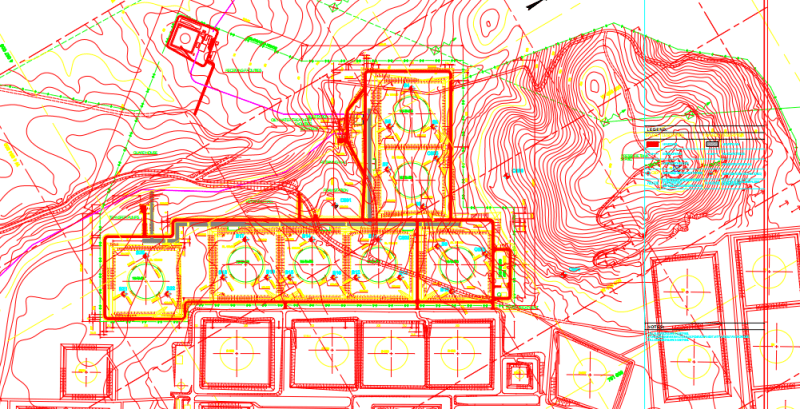Check it out on Google Earth
36°53'45.66"N
35°55'17.06"E
[highlight #CE5C00]100m Diameter Tanks[/highlight][highlight #EF2929][/highlight]
6.2.1 Geo-technical conditions
As part of the soil investigation studies that have been previously performed, a total of 6 borings have been made on site and the samples revealed that the top layer of the soil consists of sandy / gravelly clay with a layer thickness up to approximately 6 m.
Under this layer are located layers of vesicular basalt and basaltic breccia.
Tests made on the samples have shown that the vesicular basalt and the basaltic breccia layers consist of highly to moderately weathered material.
Uniaxial compressive tests on the samples have shown various degree of strength, ranging from 48 MPa to 278 MPa for the vesicular basalt and from 10 MPa to 38 MPa for the basaltic breccia.
The previously performed TCR and RQD test results, have shown the vesicular basalt and the basaltic breccia as highly to moderately weathered.
Also the previously performed pressure meter test results have shown a modulus of deformation of minimum 16 MPa for basaltic breccia and minimum 56 MPa for vesicular basalt. These values can be used for estimating the settlement of the tanks.
The soil pressure under the tank, derived from the height of the liquid column and weight of the tank is 0.20 – 0.22 MPa maximum.
These values are far less than the uniaxial compressive strength values of the rocky sub grade and therefore the bearing capacity of the vesicular basalt and the basaltic breccias layers of the sub grade is sufficient.
Soil characteristics of the top layer of sandy / gravelly clay are not determined. These values shall be obtained by tests during detail design.
In order to obtain a sufficient bearing capacity for this top layer, compaction to 90% of the Proctor value is required.
==============================================================================================
The borings shall be drilled with rotary type machines equipped with a hydraulic feed or hollow stem auger type drilling equipment and capable of securing satisfactory samples of the required diameters to a[highlight #EF2929] depth of maximum 60 meters[/highlight]. Casing shall be used where necessary to keep the hole open and enable the boring to advance. When bedrock is encountered during the drilling process, rock shall be cored to a depth of 3 m to confirm soundness of the rock. If rock is sound no further drilling is required.
==============================================================================================
Im happy with the boring depth given there. I'd think a boring depth to 1/2 the tank's diameter would be sufficient in most cases.
Statements above are the result of works performed solely by my AI providers.
I take no responsibility for any damages or injuries of any kind that may result.

